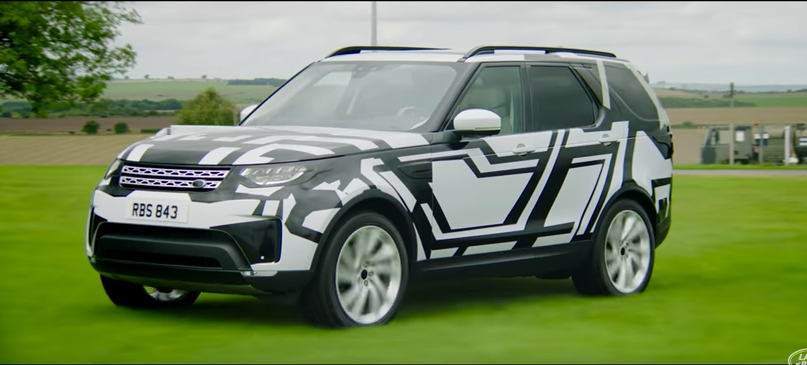Land Rover is slowly teasing its all-new Discovery before its September 28 debut. This time, the automaker foregoes a static picture and some dry press release in favor of action and star host. Yep, Land Rover called Bear Grylls to demonstrate the Discovery’s new smartphone app-controlled folding rear seats – all while falling from the sky at 125 mph.
It might be an extreme demonstration, but the fact remains that owners can now control the second and third row seats of their new 2018 Land Rover Discovery via a smartphone app from anywhere in the world. This transforms the seven-seater Discovery into a two-seater with tons of cargo room in just 14 seconds.
What’s more, any seating configuration can be achieved, including folding or unfolding individual seats or rows. It just requires the optional Seven Position Seating package, which includes the Intelligent Seat Fold feature as standard. The Land Rover InControl Remote app is downloadable at Apple and Android’s app stores.
Aside from using the app, the Discovery’s seats are controllable using buttons in the cargo area, as well as menu buttons within the InControl infotainment system. Alex Heslop, Land Rover’s Chief Engineer for Discovery says, “This unique feature sets the all-new Discovery apart from any other vehicle. The fact that owners can change the seating while doing things like shopping is a true milestone in convenience delivered through technological innovation.”
Expect more innovated technology like this to break cover in the coming days. Land Rover is set to debut the new Discovery at the 2016 Paris Motor Show.
Continue reading for more information.
Why It Matters
While it might not be a feature folks use every day, the ability to remotely control the Discovery’s seating positions will surely come in handy in certain situations. Beyond that, this seems a little gimmicky. I mean, are you really going to lower the seats with your iPhone rather than just pushing the button once you’re standing at the Discovery’s liftgate?
Of course, this development seems rather simple, since the seats are already controllable from within the InControl infotainment system. All it takes is adding the control buttons within the smartphone app, which already has a direct line of communication with the vehicle for things like diagnostics, fuel readouts, and door locking.
Nevertheless, this is an innovative feature that has the potential to catch on elsewhere in the market. Other automakers could realize the benefits and further automate in-car features. A handful of automakers already offer smartphone apps that control several vehicle functions, but not to the degree of altering seating positions. One thing is for sure: the future is now.

